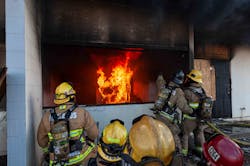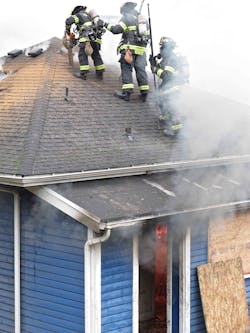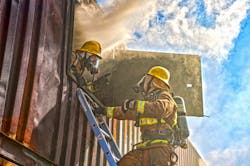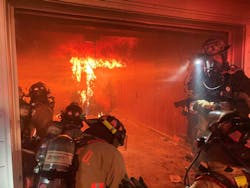Firefighter Training: Focus and Repetition
The firefighter job is dangerous, because we’re asked to do so many different tasks. However, there’s a lot of truth in the statement “You do best what you do most.” Furthermore, there’s a relationship between focus and repetition and the quality of our performance and safety over time. At least two factors are in play here. The first has to do with identifying and focusing on the separate parts of a task. The second has to do with the frequency and number of times that we perform a firefighting task. The objective is to identify critical firefighting tasks that should be performed at the unconscious level. Even experienced firefighters can miss important fireground cues when they must focus attention on their hands and the details of their SCBA and turnout gear while they dress for entry. Missing these cues could initiate the chain reaction of a fatal error. No matter your time in the service, your rank, your apparatus assignment, your level of training or your education, you could be the source or even the victim of a significant mishap.
It appears at times that the American fire servicer has a learning problem. While we sort out how to improve skills and knowledge acquisition, two points of feedback might be helpful: learn to focus and get in more repetitions.
Performance vs. understanding
Any discussion about learning challenges must begin with how we approach learning. We tend to separate learning the craft into training and education.
Training implies short-term, hands-on, practical, narrow, job-specific learning activities. Training is the path to performance.
Education isn’t always short blocks of instruction nor performance based. It involves broader, thinking-based learning activities. It’s the path to understanding.
We often debate the value of one approach versus the other. We do many jobs. Some require action and skills, and others require reasoning and understanding. Deploying hoselines requires training. Knowing how a nozzle stream will affect fire dynamics requires education.
Training and education are integral parts of a continuous learning cycle, and each requires both thinking and doing. The message at this point is simple: commit to both. Don’t lean too much on one mode of learning. Work on being as skilled as possible while expanding your understanding about the nature of our work.
Second nature
Fire instructors know that learning occurs when a change in behavior—meaning the performance of new skills (or knowledge)—is observed. Once a firefighter leaves the academy, skills and knowledge are reinforced through drills and firsthand experiences. Thus, what we learn through training activities (no matter how authentic that they are) and education isn’t integrated fully into practice until they are experienced. In many cases, skills, such as donning PPE, stretching hoselines and operating apparatus, must be experienced many times before they become second nature.That said, fireground experience isn’t a substitute for training and drilling. Certain firefighting skills might be perishable if they aren’t exercised enough or fully integrated into practice. Rookie firefighters are the perfect example of this. How many times will they need to practice how to deploy a 24-foot ground ladder before they can do it quickly and cleanly? What happens to their performance and awareness when three or four suppression skill sets are strung together in a row?
The knowledge and skills that are acquired during initial training should be reinforced to the point that they become second nature—in other words, don’t require conscious awareness, sensory focus or thinking resources. This level of unconscious learning, which sometimes is associated with muscle memory, is the key to allowing a firefighter to act and think at the same time. When you strive to operate at this level, you will have processing and observation resources available to monitor conditions, think ahead and be able to hear important safety messages.
Learn to focus
The fire service has done a great job of outlining the competency requirements for each of the many jobs and tasks that firefighters perform. However, what are the competency requirements when we combine fire suppression, EMS, hazmat and technical rescue roles? We don’t really know how many independent roles and skill sets a firefighter can manage at one time. Plus, we don’t know what happens to current skills that are diluted when others are taken on. Finally, we don’t know where skills go when we are unable to exercise or apply them. Maybe we should know.
Until then, we must do the most that we can to improve our ability to focus. After all, there are a lot more distractions in a firefighter’s life than work, and distractions can get you killed.
Learning to focus on a job that demands—and even rewards—cross-functional multitasking can be difficult. We are expected to be firefighters, EMT and rescue technicians and to perform facility maintenance, just to name a few of our roles.
The psychology of intention and focus isn’t my field, so consider this practical opinion from a 38-year career.Two strategies that might be helpful include learning to focus on one job or task at a time and eliminating and neutralizing distractions.
Focusing on a single task at a time helps to eliminate and neutralize distractions. We don’t always have control of what’s expected of us, but it’s easy to fall into the trap of doing more than is necessary.
Allowing ourselves to become distracted can be a choice. Who is more regarded? Firefighters who are involved in everything with a lot of energy but don’t do any one thing particularly well, or the ones who limit their involvement and are the go-to firefighters when it’s showtime?
I have observed both kinds of firefighters many times. I find that the go-to firefighters will spend hours on a single task, such as cleaning axes and pikes. They will dismantle a chainsaw and operate it over and over again noticing how it sounds, what makes it start faster, and how to choke it out and recover. They notice the smallest of details. They seem to be quiet inside. Their mind is directed on the task literally at hand. They aren’t sidetracked nor willing to stop what they are doing because someone wants to interact with them. They have learned to separate themselves within a very active and dynamic workspace.
Repetitions
When a firefighter is learning new skills, a limited number of tasks are performed and then practiced within the training environment until they can be performed without error. Honing any firefighting skill to perform it reliably in any weather condition, in any level of light and in any fireground condition and under extreme time constraints requires repetition.
You do best what you do most. There is no shortcut and no substitution
Another way to look at it is that where you spend your time and energy reflects what’s important to you and what you likely will be good at when you’re called upon. Just because a firefighter knows something doesn’t mean that person can do it. In fact, we know that, without repetition, skills perish over time, and more focus is required to complete the task. How many near misses and accident reports include a new member assigned to a new role of apparatus driver? Academy training don’t qualify new firefighters—or officers, for that matter—to perform roof work with no additional reps under their ladder belts. However, we don’t know how many reps that it takes before a task becomes unconscious/part of our muscle memory. Some researchers have suggested that, in some cases, a task requires 30–40 reps to achieve this; others propose that it takes hundreds if not thousands of hours.Which skills should I focus on? Know which tasks can kill you or someone else if you don’t do them well and start there.
My observation is that it matters less how many times that a task or skill is performed. What matters more is the level of performance that’s achieved. If you are able to perform a critical task without thinking about the steps that are necessary to perform it and are able to maintain a level of awareness of the conditions that are around you and also communicate with others at the same time, you probably have enough reps in. Never forget that some skills get rusty when they aren’t exercised and that all skills aren’t transferable. Operating an engine isn’t the same as operating a ladder. All of us are subject matter novices at some point, no matter how long that we have been on the job.
Conversely, if you must think through the steps in a critical firefighting task or are unable to look away long enough to observe the emergency scene or are unable to give or follow instructions, you need more reps.It takes as many as it takes.
Ironically, learning that’s acquired through either training or education activities requires some measure of repetition, too.
Return on investment
How firefighters learn to perform their work remains somewhat of a mystery from an academic point of view. That said, from a practical point of view, we do a great job of learning how to perform one of the most dangerous and complex jobs.
The investment that we make in training and education should contribute to the reduction in injuries and fatalities among firefighters. Stay focused, and get in more reps.
About the Author
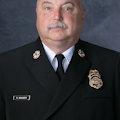
Frederick Kauser
Frederick Kauser retired as the fire chief for the Mifflin Township, OH, Division of Fire, where he worked for 40 years. The 100-member career fire department responds to approximately 11,000 incidents annually. Kauser has an associate degree and a bachelor's degree in fire science, a master's degree in labor and human resource management and a PhD from the College of Education and Human Ecology at The Ohio State University. He is a fire instructor, lecturer, trainer, professor, and researcher in social and cognitive learning. Kauser teaches and lectures on a variety of training and higher education topics in the fire service.
